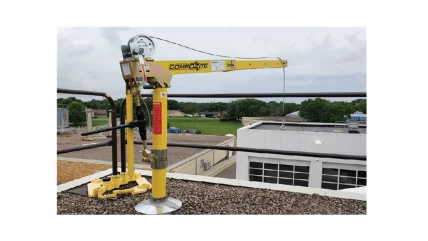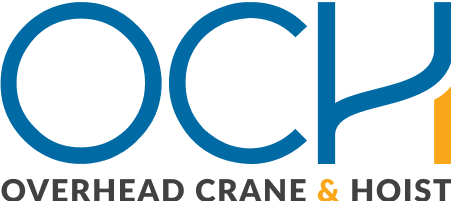
In the year 2050, technology will dominate the workplace with artificial intelligence (AI) and smart assistants being commonplace, while the use of augmented and virtual reality continues to increase. Everything will be ‘smart’ – connected and data-driven.
Lifting operations have become an integral part of our daily lives, from construction sites to warehouses and with rapid advancements in technology such as sensors and real-time data there is a growing emphasis on safety.
Without proper lifting operations, the construction of skyscrapers, shipping of heavy machinery, and many of our daily operations would not be possible.
By ensuring a streamlined and efficient system, lifting operations contribute significantly to our economy and development.
As the world gravitates towards eco-friendly solutions, the lifting industry isn’t lagging. New equipment is being designed to reduce emissions, consume less energy, and have a minimal carbon footprint. IoT technology will change product designs, Ocean Thermal Energy can take us to 100% renewable-energy and half of the current jobs in the world are unlikely to exist. To find out more we chat to our experts to gather their thoughts on the topic.
OCH: What are the primary challenges faced by manufacturers and companies in today's lifting landscape?
Steve Pilione, director, sales & marketing, Electrolift: Manufacturers encounter a significant challenge in acquiring the appropriate lifting equipment tailored to their specific applications.
While experts in their product manufacturing, specifying the right hoist extends beyond basic parameters like lift, speed, and capacity.
The operational environment and dimensional restrictions are crucial factors impacting safety and optimizing hoist life and downtime. For instance, hoists utilized in Hot Metal applications demand distinct features and requirements compared to those used in automobile manufacturing. This underscores that the hoist industry is far from a one-size- fits-all situation.
OCH: How does Electrolift resolve this problem and how does it differ compared to its rivals?
SP: Electrolift stands out by specializing in custom-engineered solutions, a key differentiator in the industry. When faced with unconventional applications, the company actively collaborates with clients, seeking to comprehend the unique challenges and customize equipment based on their standard designs.
For instance, Electrolift addresses spatial constraints with their low headroom design hoists, offering solutions as low as 14" in single girder applications. In double girder applications, they can provide headroom even with the running tread of the track. The company goes beyond spatial considerations, catering to diverse operating environments. Electrolift offers hoists tailored for marine and outdoor applications, hazardous areas meeting NEC requirements, as well as clean room and galvanizing applications.
The use of upgraded materials like stainless steel or plated components ensures longevity in harsh environments.
Electrolift's commitment extends to optimizing efficiency, offering twin hook and four-point pick hoists with a single gearbox. This unique design, where two drums are turned by a common shaft, provides a balanced and synchronized lift. Not only does this eliminate the need for multiple hoists, but it also reduces the number of parts that require maintenance, setting Electrolift apart in the competitive landscape.
OCH: What changes do you foresee in the future for the lifting equipment sector?
SP: The evolving landscape of the lifting equipment sector is characterized by a substantial shift towards the demand for customized hoists, a trend that is already taking shape and expected to persist.
The industry must continually adapt to the myriad advancements in manufacturing, necessitating the ability to evolve, update, and modify products to meet the unique requirements of customers.
Looking ahead, the continuation of the integration of automated controls and automation is poised to play a pivotal role. There will be a sustained emphasis on supplying encoders on motors and for automate operations, particularly in determining precise precision.
An example of the ongoing customization trend is our specialized hoist designed exclusively for rail car shaker applications. This tailored solution directly addresses the unique challenges within the industry, showcasing our commitment to crafting equipment
OCH: What are the main challenges companies face today when it comes to lifting?
Steve Napieralski, president, Oz Lifting: For any company in any industry, it's really the labor issue, of how to find people.
Here at Oz Lifting, we've got plenty of staff, but I just was talking with my operations manager the other day and we said, you know, if we found the right person, we'd hire them immediately because for us it's a really important part of our culture. You could be the smartest person, but if you don't fit into our culture here, it just doesn't work.
And we've had situations like that where we've had some people that are extremely talented, but they just couldn't fit our culture.
How do your lifting products compare to what’s out there on the market?
SN: One of the things we've done since day one, and this year we are celebrating our 20th anniversary, so it’s pretty exciting, is that we still handle every order the same, whether it's coming from a big distributor or it's a small mom and pop shop. We treat every order the same and I think that has stood us well over these past 20 years.
We were one of the first in the industry to introduce CompOZite technology (made of Advanced Composite Material) and I've got three patents and a fourth one on the way. When I go to any tradeshows or when I'm talking with my colleagues, a lot of them will say to me that we are innovating like no other company, and that really is the other part of the business, when we introduce a new product, because we want to be innovative.
We want to solve a problem that's existed out there and with what we do, the proof is in the pudding. Our sales have grown, we've increased 20% in the last three years. We ploughed right through Covid and it's because of that innovation. It’s that which separates us from a lot of the competitors.
When I first started the business, it was strictly import – we were importing from China and my dream and goal was to be manufacturing products here in the United States. So now my business is about 60% import and 40% domestic that we're making here, and from a SKU (Stock Keeping Unit) count I would say we probably have approximately 900 SKUs.
It's been a very exciting time for us, and I just bought a 40,000 square foot building here in Winona, where the business is headquartered and warehoused in Minnesota, because we are busting at the seams in our current building.
We're excited about moving and I've got a lot of products that I want to launch, but I just don't have the room to do it. I employ 23 people and we'll probably celebrate our milestone anniversary once we move into the new building, this summer.
OCH: What changes do you see in the future in this sector?
SN: Our industry is not going to go away. As long as people are building things, maintaining buildings and construction sites, our industry is going to continue to be strong. The interesting developments are artificial intelligence and what that's going to bring to our market. But we don't know what will happen. No one has a crystal ball, but that's an interesting concept to see how companies are going to utilize that.
The main trends I'm seeing when I go to shows like PROMAT and MODEX is that there are a lot more robotics appearing on the scene, which I think is the reason for the labor shortage. People are recognizing that you can buy a robot and it can work 24/7 and you don’t have to worry about hiring and firing employees, so you're seeing a lot more robotics coming onto the market.
OCH: What do you see as the challenges in overhead lifting today?
Rob Beightol, director, marketing, Gorbel: No matter the size or industry, manufacturers have been having difficulty attracting and keeping skilled workers for many years. While some of the challenges have subsided in recent months, manufacturers are continuously looking for ways to be as productive as possible with the labor that is on hand.
When it comes to overhead lifting and positioning of parts, equipment, and final goods, this means removing the guesswork out of the product/system selection process. Gorbel and our network of highly trained distributors take a consultative approach to match products with the exact job being performed.
Many times, the goal is to simultaneously increase efficiency while easing the strain on the individual worker. At times, systems may allow work that was traditionally performed by multiple workers to be transformed into a single-person operation. This allows the manufacturer to be flexible in how workers are utilized, many times allowing workers to be assigned new jobs throughout the plant. It can allow for job rotation as well.
Because needs can vary by industry and application, a variety of options are available for lifting and positioning. Many of these options remove much of the everyday strain on the worker and allow the worker to be as efficient as possible.
One of these options is an Intelligent Lifting Device with parameters that may be set based on the exact movement needed to complete the job. These devices also have a “float” mode that essentially allows the system to become an extension of the individual and permits movement in multiple directions with very little effort.
Other systems designed with ergonomics at the forefront may include enclosed track cranes with integral trolleys that move with very little resistance, allowing the worker to effortlessly move loads in multiple planes. Many times, these systems are sold with integral hoists and special tooling that is based on parameters such as the size and shape of the load being lifted as well as the application of the job.
Depending on this application, loads may be turned, flipped, or otherwise positioned as needed with the system rather than requiring individuals to perform the work manually.
By taking a consultative, solutions-based approach, manufacturers, distributors, and workers can develop solutions that are unique to specific applications and enhance productivity. While “off the shelf” products may be part of the solution, a combination of standard and unique products that comprise a complete system may be required to fully satisfy the need at the end user level.
At Gorbel, we expect this “solutions-based approach” to continue as manufacturers look for unique ways to address skilled labor shortages as well as having less experts on hand to fully address lifting and positioning needs.






